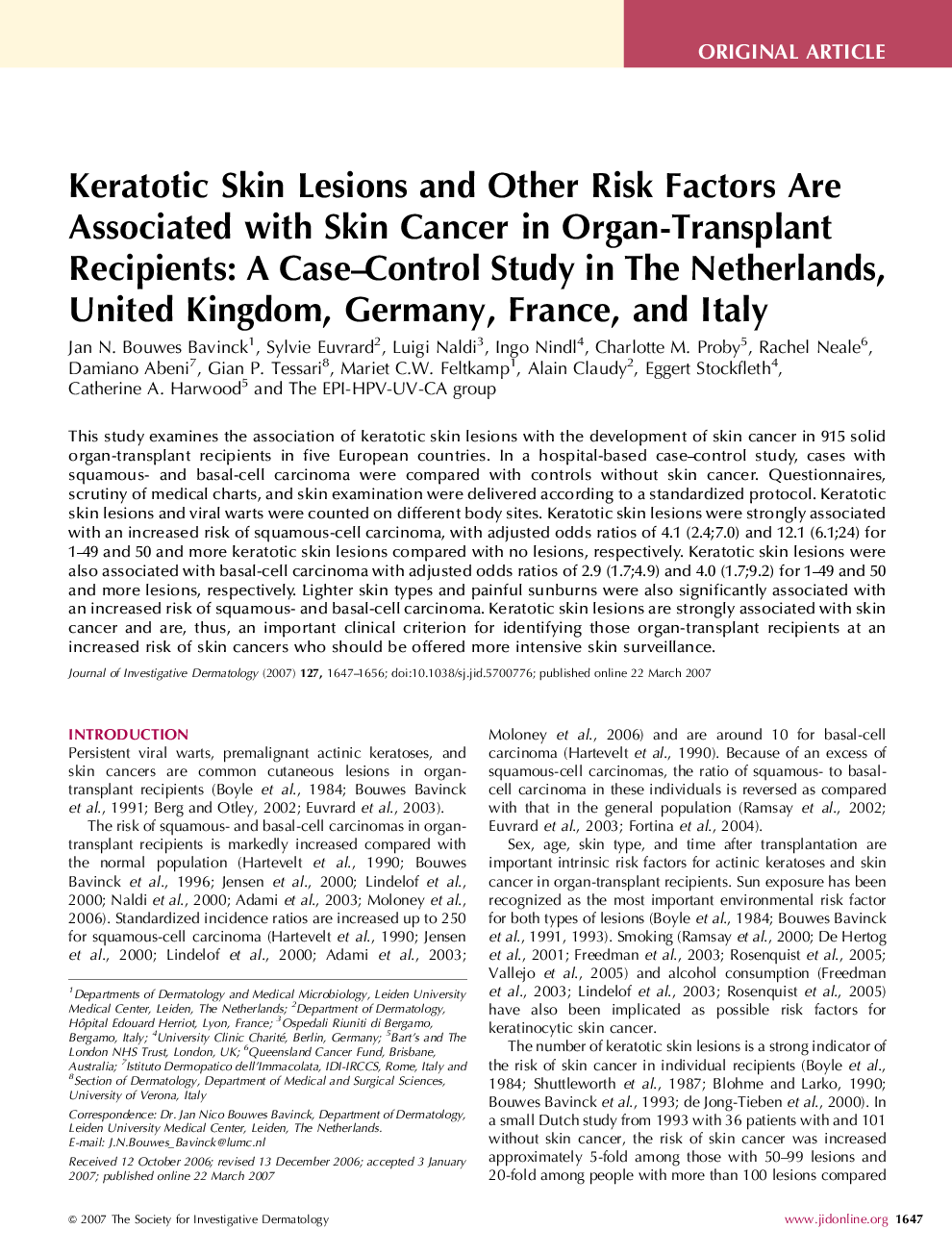| Article ID | Journal | Published Year | Pages | File Type |
|---|---|---|---|---|
| 3218493 | Journal of Investigative Dermatology | 2007 | 10 Pages |
This study examines the association of keratotic skin lesions with the development of skin cancer in 915 solid organ-transplant recipients in five European countries. In a hospital-based case–control study, cases with squamous- and basal-cell carcinoma were compared with controls without skin cancer. Questionnaires, scrutiny of medical charts, and skin examination were delivered according to a standardized protocol. Keratotic skin lesions and viral warts were counted on different body sites. Keratotic skin lesions were strongly associated with an increased risk of squamous-cell carcinoma, with adjusted odds ratios of 4.1 (2.4;7.0) and 12.1 (6.1;24) for 1–49 and 50 and more keratotic skin lesions compared with no lesions, respectively. Keratotic skin lesions were also associated with basal-cell carcinoma with adjusted odds ratios of 2.9 (1.7;4.9) and 4.0 (1.7;9.2) for 1–49 and 50 and more lesions, respectively. Lighter skin types and painful sunburns were also significantly associated with an increased risk of squamous- and basal-cell carcinoma. Keratotic skin lesions are strongly associated with skin cancer and are, thus, an important clinical criterion for identifying those organ-transplant recipients at an increased risk of skin cancers who should be offered more intensive skin surveillance.
